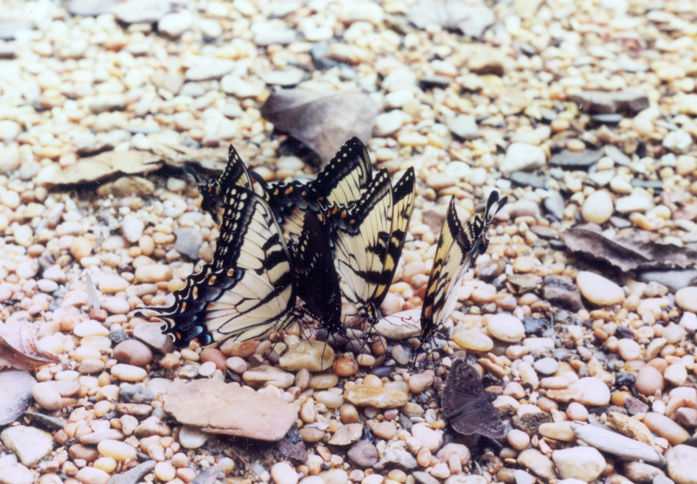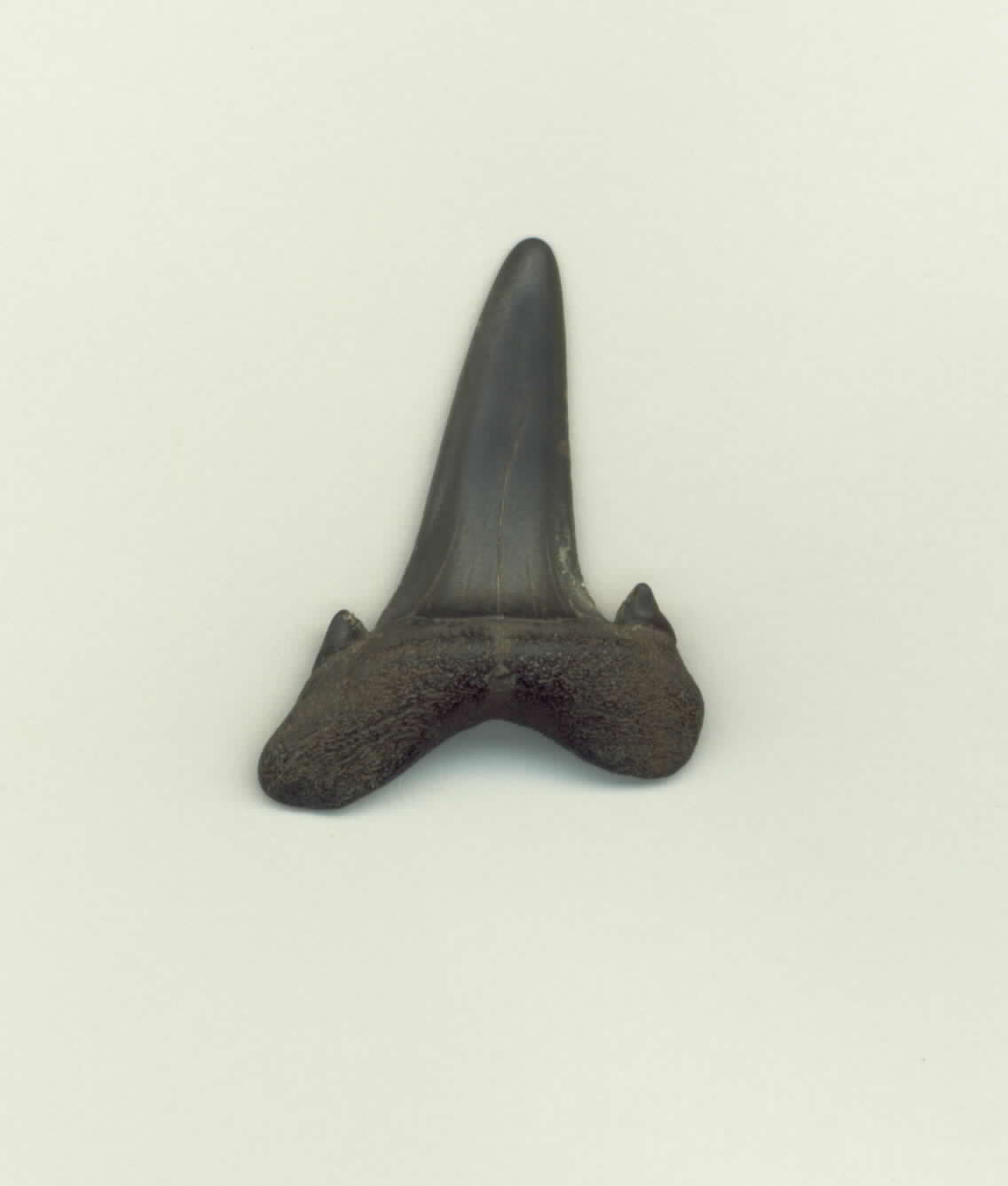Visitor
Pleistocene
Caribou from the Late Pleistocene of northwestern Alabama
A late pleistocene herpetofauna from Bell Cave, Alabama
April 17, 2004 - Cretaceous and Pleistocene Fossils, Greene Co, AL
A number of teeth from the Goblin shark and crow shark were found by all. (See the July, 2003 trip report for details on these sharks, and more on the geology of this site.)
(Photos courtesy Vicki Lais)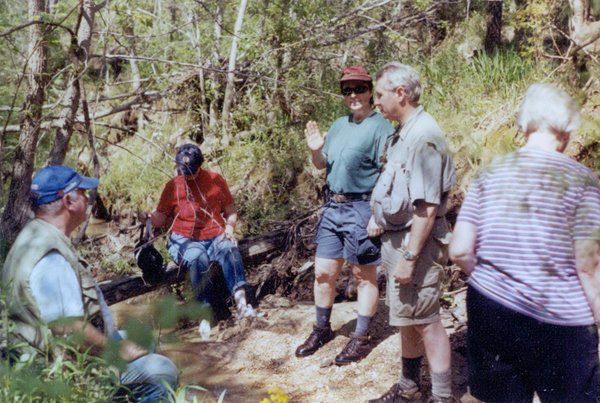
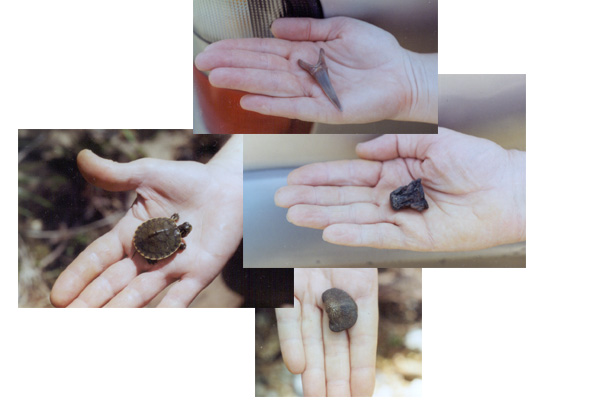
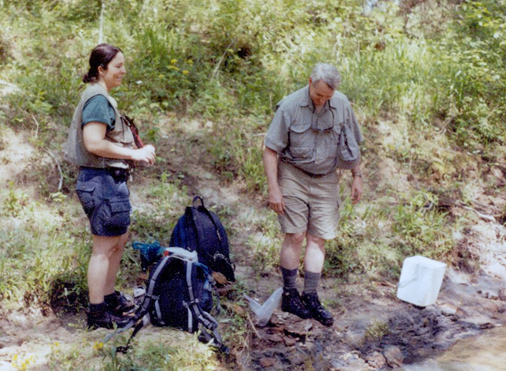
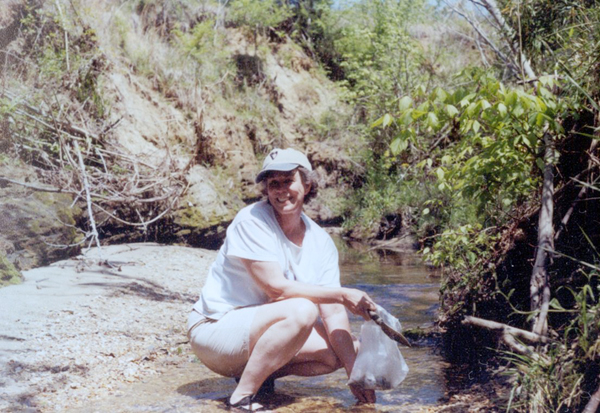
Ann and her bag of treasures.
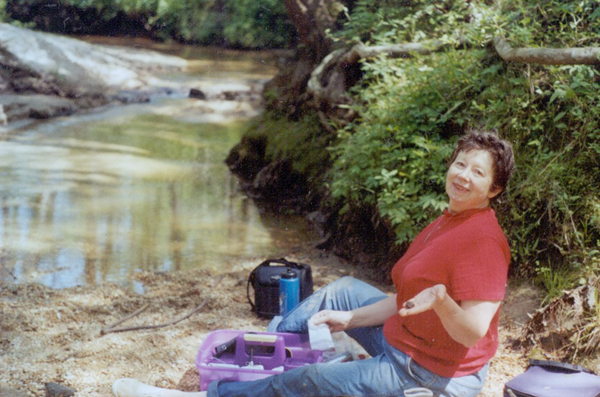
Nancy showing off her ptychodus tooth.
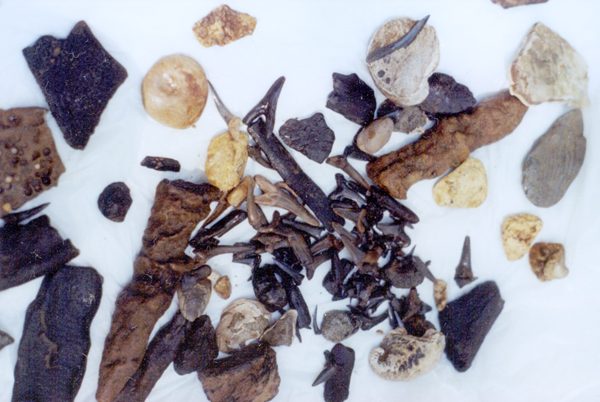
Vicki dumped her bag to show what she had collected so far. A number of shark teeth, some in matrix, bone fragments, and several "interesting unknowns".
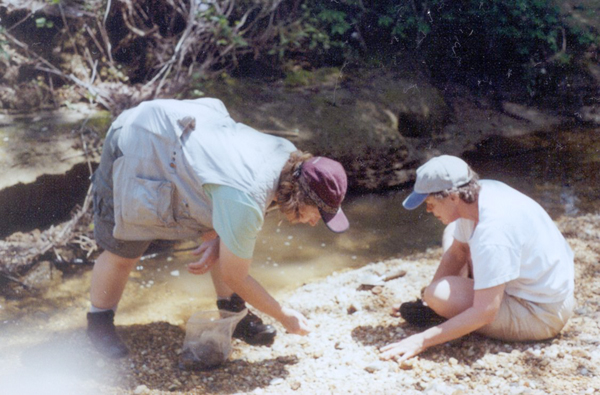
How many hours do you think Claire and Ann can do this?
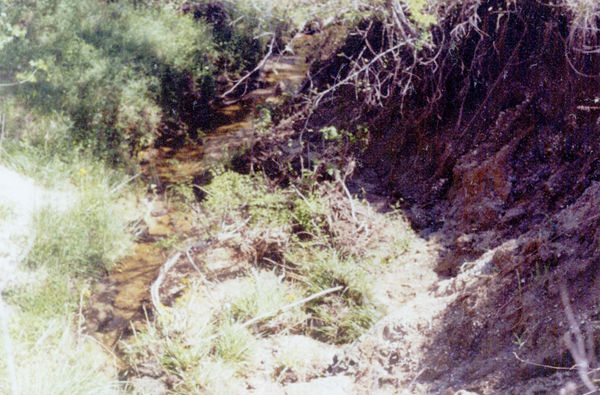
A small canyon that proved interesting. A little out of the picture one can see the strata where the teeth and pea gravel have been deposited in the bank.
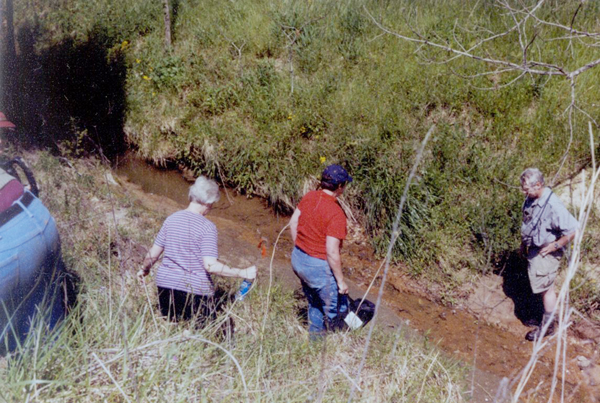
Climbing down into the canyon. (they keep telling me to quit taking pictures of rear ends....)
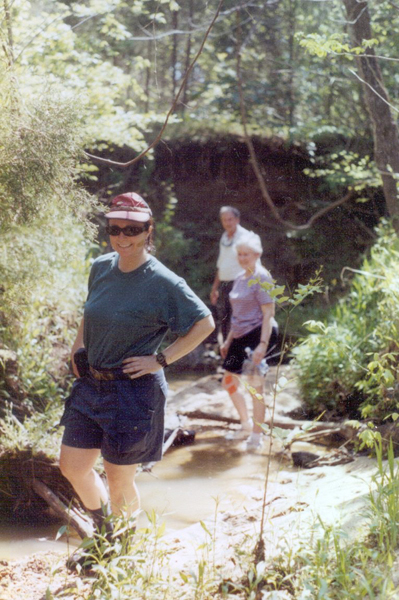
Lisa, with Jan and Bobby in the background. Steve was always somewhere way up the creek or way down the creek, and managed to totally avoid the camera.
July 26, 2003 - Cretaceous and Pleistocene Fossils, Greene Co, AL
We had so much fun at this site back in May, we wanted to do it again, and search for more mosasaur bones. And we were in luck! 2 more large vertebra were found, and 2 pieces of jawbone, one with pieces of the tooth still there, however, we did not find where they were washing out, but we all had a great time scouting. This site in Greene County, AL is characterized by large quantities of pea gravel. Going east along the creek one is in Pleistocene age material, while going west moves one through an area of Mooreville Chalk (Cretaceous).
A number of teeth from Scapanorhynchus Texanus were found by all. This shark, also known as the Goblin shark, was thought to have been extinct until it was re-discovered in the late 1800s off the coast of Japan. Its living relative is referred to as Mitsukurina Owstoni. The sharks most dominant characteristic is its long protruding snout. Living species frequent the greater depths around 1000’ or more. Scapanorhychus is estimated to have reached lengths between 3-5 meters (10-17 feet).
Its teeth are varied in shape depending on their position within the jaw. Anterior teeth are identified by their high arched bilateral roots, as shown in figure 1 below. The teeth themselves have prominent longitudinal striations running from the top of the cusp up most of the way of the inner curve. According to some sources, some anterior teeth may have tiny lateral cusplets, however not which were found exhibited this characteristic. Many of the anterior teeth (excluding root) found ranged between 2.5 to 3.5cm.
Lateral teeth, shown in figure 2 below, are much different than the anterior teeth. They are triangular in shape and have cusplets on each side of the tooth. The roots are more flattened and lack the arch that the anterior teeth possess.
--Edited by Vicki Lais
(Photos courtesy Ron Beerman and Vicki Lais)
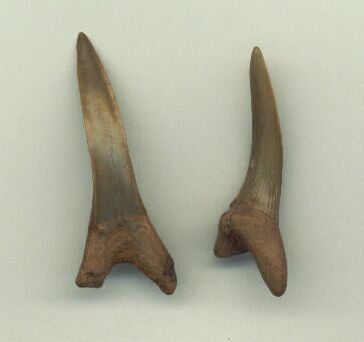 |
|
| Figure 1 | Figure 2 |
The second type of tooth found at this site was identified genus Squalicorax. Not enough information nor specimens were collected to specify the species at this time. Squalicorax, or crow shark as it is commonly known as, was believed to be both a predator and a scavenger. Fossil evidence seems to indicate that this shark grew to a length or 4.5 meters (15 feet) or more. Fossil teeth from this shark have been found in Europe, North Africa and North America. Some of the Squalicorax teeth found are shown below in figure 3.
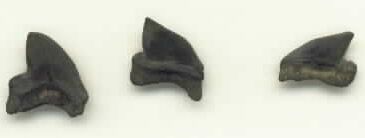
More photos of the trip:
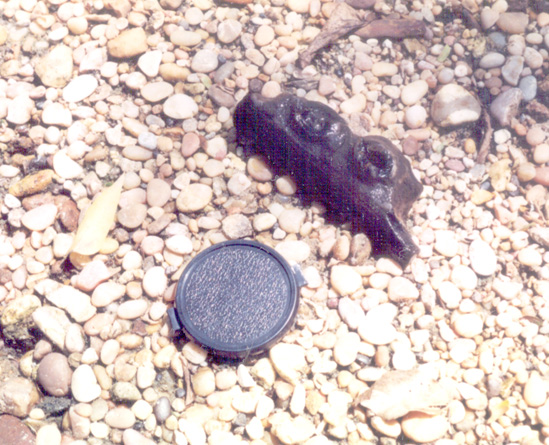
Jawbone found by Vicki.
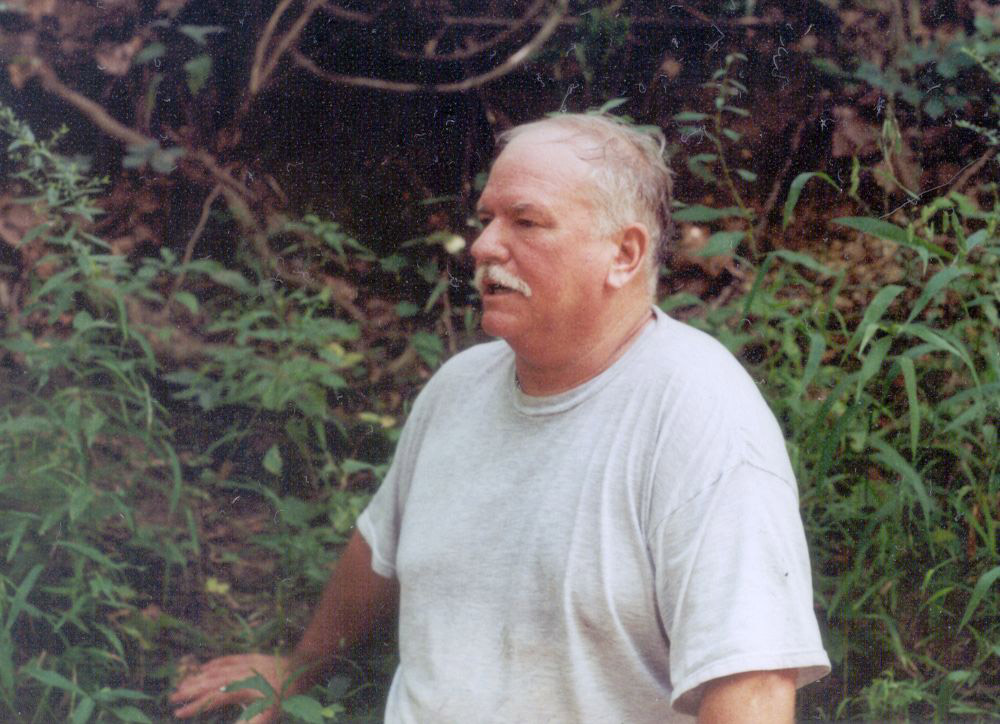
Greg describing the geology of the site.
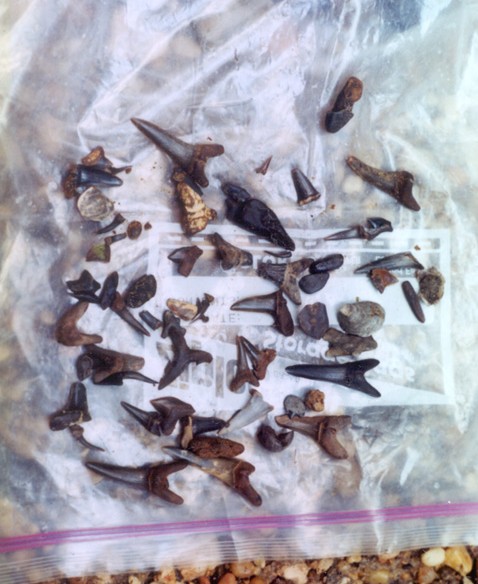
Claire's stash, above.
And Vicki's stash, below:
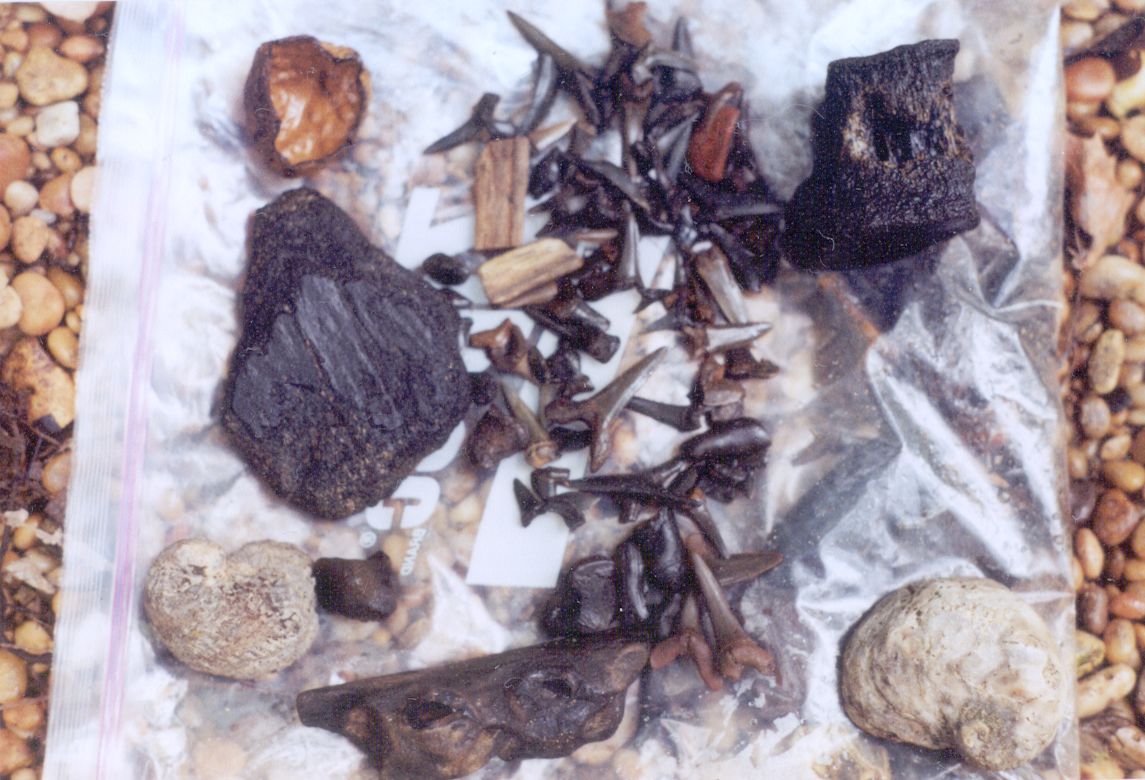
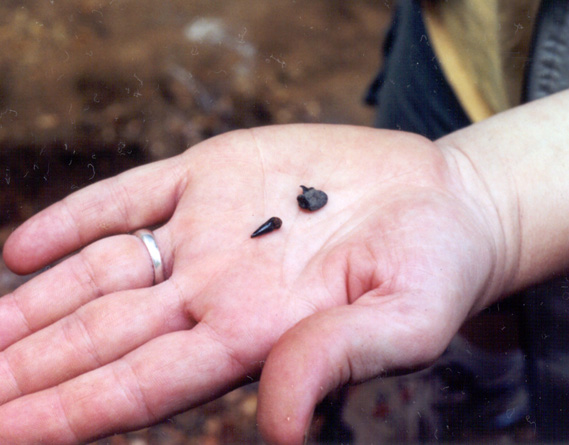
Tiny teeth; fish tooth on left found by Vicki, tooth in jaw bone found by Claire.
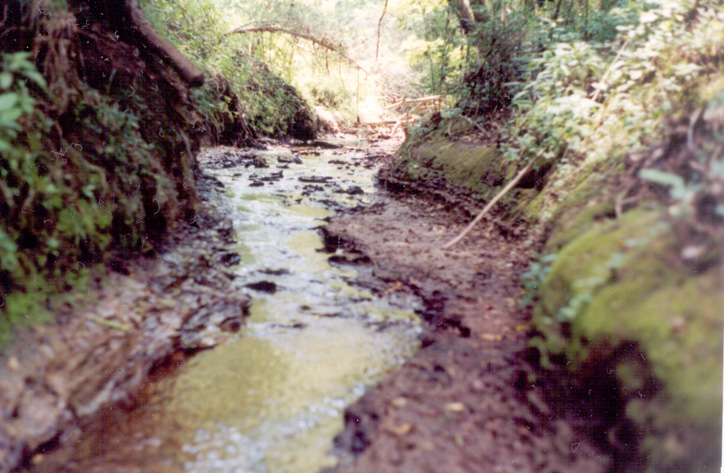
View up the creek.
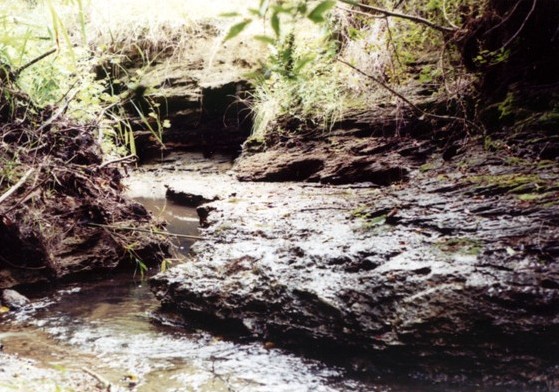
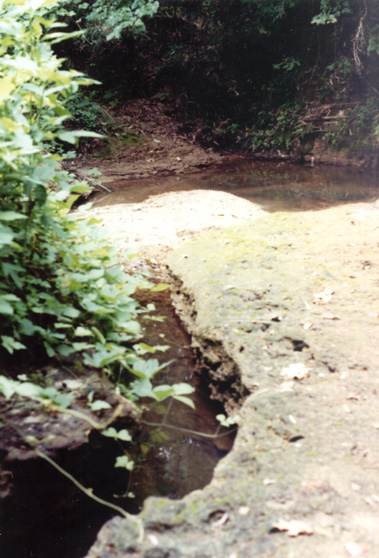
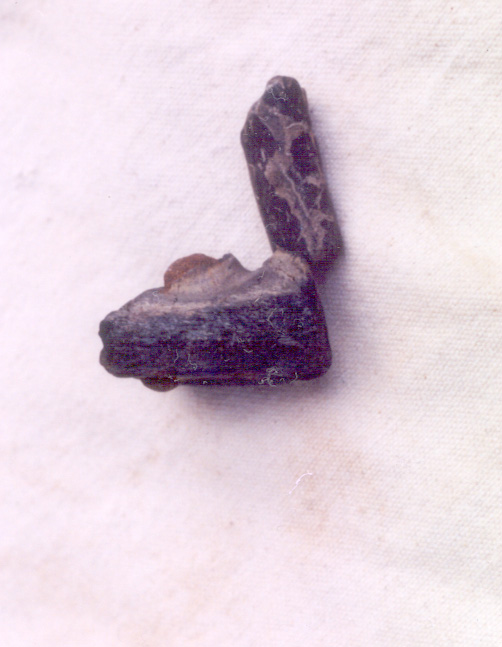
Another jaw part with portion of tooth.
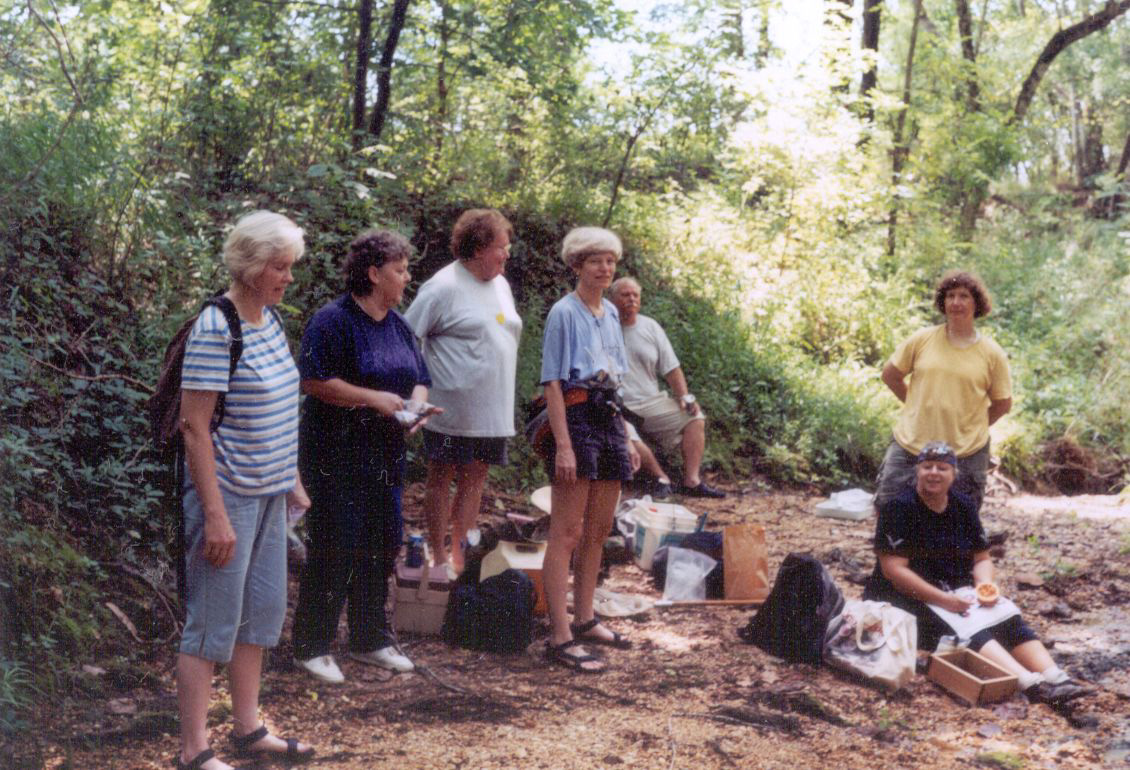
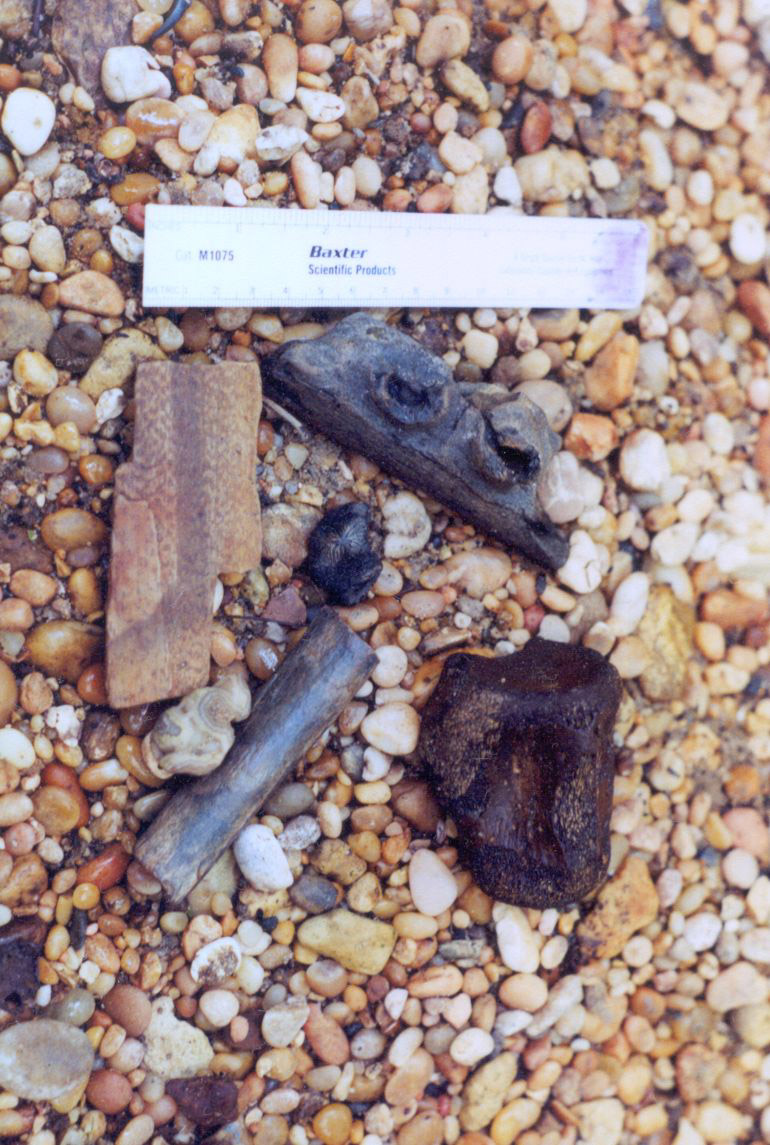
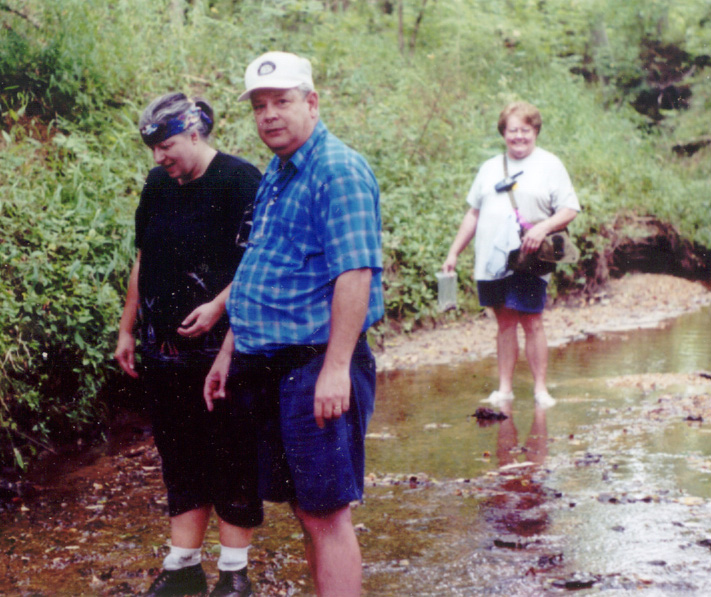
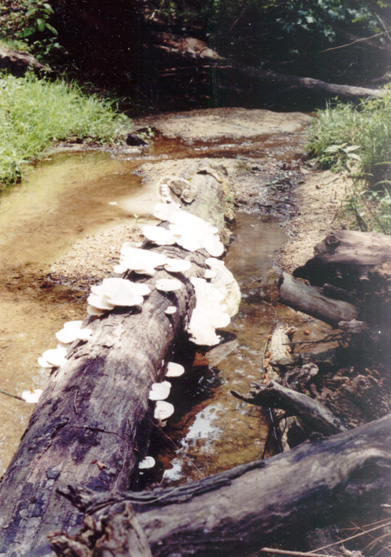
Way down the creek. Mooreville chalk can be found in this area.
